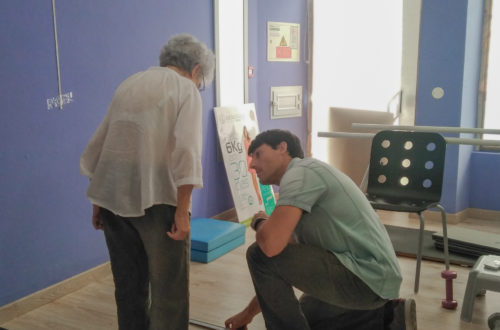Autores
Tomas-Carús, Branco J., Raimundo A., Garcia J., Sousa P.M., Biehl-Printes C.
Título
Relationships between widespread pain and thresholds pain tolerance on tender points in Portuguese women with fibromyalgia: impact on daily life.
Publicado
Acta Reumatologica Portuguesa 2015 (3), Janeiro 2015
Abstract
To establish a relationship between widespread pain subjectively perceived and threshold pain tolerance on tender points, and to determine whether there are differences in threshold pain tolerance on tender points between the upper and lower body, as well as between the dominant and non-dominant side, and whether these differences have an impact on the daily life of Portuguese women with fibromyalgia (FM). Material e Methods: thirty-one women with FM aged between 34 and 67 years volunteered for the study. Threshold pain tolerance was assessed at critical points using a digital algometer pressure; the widespread pain index (WPI) was constructed by the addition of 19 painful body regions; and the impact on the daily life assessed by the Portuguese version of the Fibromyalgia Impact Questionnaire (FIQ), with individual interviews.
significant differences between the percentage of threshold pain tolerance of the whole body and the scales of widespread pain subjectively perceived were observed, showing that the widespread pain subjectively perceived by patients was between +25.9% and +27.5%. Also, significant differences between threshold pain tolerance of tender points located on the upper and lower body (1.9 ± 0.5 kg/cm2 vs. 2.6 ± 0.7 kg/cm2; respectively) were observed. However, no significant differences were found between threshold pain tolerance of tender points located on dominant and non-dominant sides (2.1 ± 0.5 kg/cm2 e 2.1 ± 0.6 kg/cm2; respectively).
Additionally, the analysis showed significant correlations between pain and patient`s daily life in: FIQ total score, physical function, feel good, job ability and fatigue. the women with FM show higher widespread pain subjectively perceived than threshold pain tolerance on tender points. Furthermore, the pain suffered by the patients with FM, especially that located on the upper body, either on the dominant or on the non-dominant side, has a negative influence on physical function, job ability, fatigue and feel good, affecting daily life.

